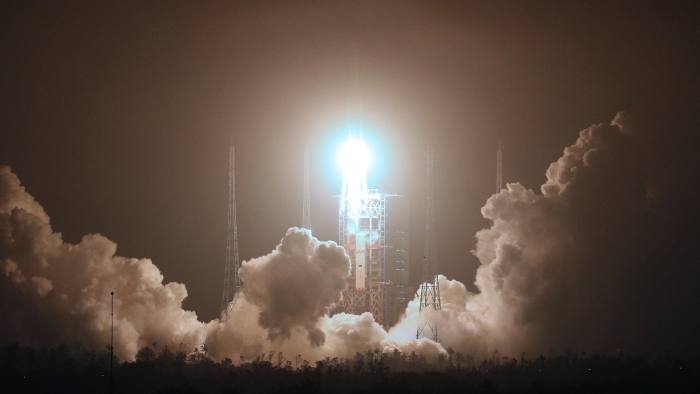(单词翻译:单击)
Sustaining a manned space station would be the crowning achievement of China’s ambitious space programme, whose budget, though dwarfed by that of the US, is set to triple by 2026.
维持一个载人空间站将是中国雄心勃勃的空间计划的最高成就。尽管中国空间计划的预算与美国相比不算高,但到2026年将增至目前水平的三倍。
“The launch of Tianzhou-1 is very significant because once our country’s space station is constructed and launched, it cannot leave its orbit so it will be crucial to send propellant and supplies as well as take back any debris and outdated equipment,” said Jiao Weixin, a professor at the School of Earth and Space Sciences at Peking University.
“天舟一号的发射是非常重大的事情,因为一旦我国的空间站建成和发射,它就不能离开轨道,所以补给推进剂和物资,同时回收任何碎片和过时设备是至关重要的,”北京大学(Peking University)地球与空间科学学院教授焦维新表示。
China’s manned space station, if launched as planned in 2022, would become the only one in orbit when Nasa’s International Space Station is retired from service in 2028.
中国的载人空间站如果按计划在2022年发射,它将在美国国家航空航天局(NASA)的国际空间站(International Space Station)在2028年退役后成为唯一在轨的空间站。
“After our space station is launched, then if the US or Russia needs to do space research, then we can say, ‘sorry, you will have to contact China and co-operate with us’,” said Prof Jiao.
“在我国的空间站发射之后,如果美国或俄罗斯需要进行空间研究,那么我们可以说:‘抱歉,你必须联系中国,与我们合作,’”焦维新表示。
The Soviet Union was the first to successfully pull off docking between unmanned ships in 1967. However, in-orbit refuelling is an engineering feat that has only been completed a handful of times. The Tianzhou-1 can carry nearly six tonnes of supplies including fuel, according to state media agency Xinhua.
苏联在1967年首次实现无人飞船在太空对接。然而,在轨推进剂补加是一项仅仅完成了几次的工程壮举。据官方的新华社报道,天舟一号可以携带近6吨物资,包括燃料。
China’s space programme has largely replicated the trajectory of those of the US and Russia. The three-part modular design of the Tiangong II space lab is based on Russia’s Mir space station, which was in orbit until 2001.
中国的空间计划基本上重走美国和俄罗斯走过的老路。天宫二号空间实验室的三部分模块化设计,就是基于俄罗斯早在2001年就退役的和平号空间站(Mir space station)。
China plans to send a rover to Mars by 2020 and has set a 2036 deadline for putting a man on the moon.
中国计划到2020年向火星发射探测器,还设定了到2036年把航天员送上月球的截止期限。

The country’s rapid space technology build-up stoked envy among regional neighbours, notably India, whose national space programme has lagged behind that of its great Asian rival.
中国空间技术的快速发展引起亚洲邻国的艳羡,尤其是印度,该国的空间计划落后于其在亚洲的最大对手。
Beijing views the Chinese space programme as “an important part of the nation’s overall development strategy”, according to a government white paper detailing China’s five-year space plans. “It has opened up a path of self-reliance and independent innovation.”
根据详细介绍中国五年空间计划的政府白皮书,北京把中国的空间计划视为“国家整体发展战略的重要组成部分……走出了一条自力更生、自主创新的发展道路”。
Tianzhou-1, nicknamed “Tiangong’s express delivery little brother” by Chinese media, is almost 11 metres long, has a diameter of 3.35m and weighs 13 tonnes. It was launched by a Chinese Long March rocket from the newly built Wenchang Satellite Launch Centre in the island province of Hainan.
被中国媒体亲切称为“快递小哥”的天舟一号,长11米,直径3.35米,重13吨,由中国长征火箭从在海南省新建的文昌卫星发射中心发射。
When it has completed its mission, it will decouple from the Tiangong space station, descend from orbit and burn up in the atmosphere.
完成任务后,天舟一号将与天宫空间站分离,从轨道下降,在大气层中焚毁。


